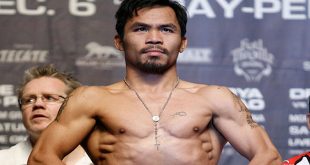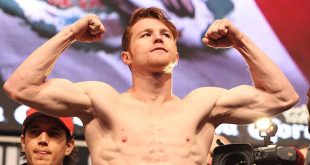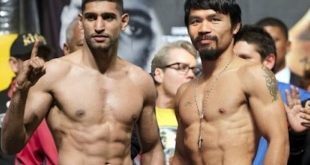As Professional Boxing enjoys a long overdue resurgence and our current champions finally receive the exposure they deserve, there are other men who anonymously prepare to become champions themselves. These men are the less famed and less credited amateur boxers who toil at their trade without payment or recognition.
As the final qualifiers draw to a close, the men fortunate enough to have qualified, begin to undergo intense training in anticipation of their opportunity in the Beijing Olympic Games this year.
With boxing enjoying a huge influx of new fans and much of the attention being bestowed upon the glorious profession welterweights, middleweights and bantamweights, it is not surprising that the amateur game has been lost from the radar slightly and there is a lack of knowledge on Olympic Boxing.
However, in the hearts of many, these games mean as much as a world titles in the paid ranks and the rules, requirements and demands of the competition have been studied in acute detail. This after all, is the pinnacle of amateur boxing.
First introduced to the games in the St. Louis Olympics back in 1904, boxing had a turbulent honeymoon phase, being disallowed in the 1912 Stockholm Olympics. It was 1920 before the event became a permanent fixture in the games, but since that time, the event has produced volumes of itʼs own heroes, idols and legends.
Qualification for the tournament is a hotly contested privilege, to be earned rather than won. Regional tournament in Europe, Asia, the Americas, Africa and Oceania all serve as obstacle-laden routes toward their dream destination; the Olympic Games.
In modern times, athletes wishing to compete must adopt a near professional attitude, training and living the life of a top-level athlete. As each country can have a maximum of one boxer per weight, competition begins not on the International or Continental scene, but at home, against domestic fighters and local rivals.
Each of the eventʼs eleven weight divisions can have twenty-eight entrants; apart form the heavyweight and super heavyweight divisions, which only cater for sixteen entrants each. This equates to a total of two hundred and eighty four. If one contrasts this number with the thousands of boxers aspiring to enter, one can truly appreciate the difficulty of qualification for this tournament.
Upon the boxerʼs arrival to the games, they will be met with a body of rules and regulations of a scale and level of detail which will not be encountered outside of the World Championships. Of course they will be accustomed with the attire; boxers are dressed in either blue or red to oppose the opponent’s dress, ten ounce gloves of blue or red are worn with a white “scoring stripe” on the knuckle region of the glove and headgear along with other safety equipment approved by the Olympic Council and AIBA are obligatory.
What the fighters will not be acquainted with is the level of detail the Olympic organisation has laid out in order to ensure the fighterʼs safety and the best interests of the sport. A ring of 6.1metre measurement, inside the ropes, is used, Canvas is laid, allowing a minimum overhang of 45.72 cm outside of the ring. Four ropes are employed, with the lowest rope required to sit 40.66cm off the canvas and a space of 30.48cm are placed between each of the four ropes.
The rules also have a more physical effect on the fighters. Some nations use three rounds for their championships, but the games demand the implementation of four, two-minute rounds. As with all amateur boxing, a win is awarded by way of stoppage or points decision.
What varies is the nature of the points and their judging. Five judges take charge of the computerised scoring, given the option of a red and blue button to correspond with the similarly dressed boxer. In order to award a point, three of the five judges must press the same button within a second of one another, ensuring that when the fight reaches itʼs conclusion the result is one which all judges have contributed to.
The objective nature of the judges comes into play when flurries occur. In these situations, the judgesʼ wait until the trade of blows ceases and then award a point to the boxer they feel won the exchange. This explains as to why an amateur fight with a large volume of punches may conclude with a decision comprising of a small number of points.
The objective nature of the judges may again be in use, should the fight end in a draw. In such instances, the judges make a ruling, which is based on adverse factors such as quality of punching, defence, movement and style. It must also be noted that the judges are trained to score only punches, which are deemed to have “force” behind them. These factors all contribute to a system, which although not perfect, awards the win to the cleaner more effective boxer.
The casual fan, or indeed, the fan of professional boxing exclusively, may find themselves puzzled by the system of stoppages used in Olympic boxing. If a fighter is knocked outside of the ropes, is hanging onto the ropes or is simply forced from his feet by a scoring blow, a knockdown is counted.
A count is administered, timed by an electronic beeper outside of the ring. The referee is also obliged to indicate the amount of time the fighter is on the canvas using his fingers, so as to give the fighter a visual indication of the time he has spent on the canvas. The fighter is given ten seconds in which to rise. Should the fighter rise quickly or immediately, there is a mandatory count of eight administered, in which the boxer has the opportunity to recover.
Should a boxer be forced to take three counts in a round, the fight will be stopped. On a similar note, a fighter taking four counts in a fight will also force a stoppage. In the final round, the final bell can save the boxer, and the count will not be completed; this is the only round in which this rule takes effect.
A disqualification is a less satisfactory ending to a fight. The referee will caution a boxer should he foul the opponent or infringe the rules in any way. If a fighter is cautioned twice, a warning is issued. Three warnings of any kind will result in a disqualification. All decisions on cautions, warnings and disqualifications are at the discretion of the referee. These rules in relation to both disqualification and stoppages portray the importance in the appointment of qualified and adequately experienced referees.
The 2008 Beijing Olympics will open on August 8, with all boxing initiating the day after, August 9. Boxing competition will occur almost daily and is scheduled to conclude on August 24. This year, 50%, of the gameʼs events will take place in Beijingʼs, “Olympic Green,” which contains venues, the Olympic Village, the main press centre and a Forest Park. The venue listed for all boxing events is the Workers Indoor Arena in Gongti Liu in the Chaoyang District.
The Olympics in the past have been an occasion, which not only inspire athletes to give the performances of their lives, but also spurs fighters on, propelling them forward into professional careers. The importance of this event cannot be expressed adequately in a single sentence, but one only has to note the amount of former Olympians who have went on to famed professional careers to realise that this tournament is a breeding ground of great pugilists.
History has been created at the games before and every true boxing fan should be interested in their outcome. I certainly hope that if you are reading this article you will make an effort to observe the dreams of eleven men being realised, as they are awarded Gold Medals for their successes and honoured for the obstacles they overcame on route to victory.
 Boxing News Boxing News
Boxing News Boxing News






